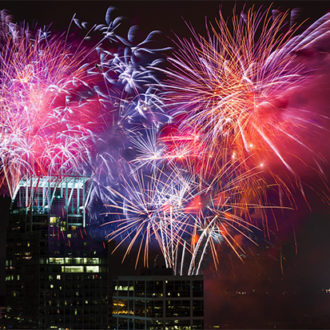A Few Things You Can do to Make Sharper Photographs

Not every photo needs to be sharp edge to edge, but when you want maximum sharpness in your photographs, there are things you can do to achieve that goal. Here are a few of them.
Use Good Glass
We all know it’s the photographer who makes the image, not the camera. But there are times when better gear, in the hands of someone who knows how to get the most out of it, will do a better job of delivering a sharp image.
If you have a $400 camera and lens combo, you can make sharp images. If you have a $4000 camera and lens combo that includes fast, pro-quality glass, and you know how to get every drop of performance out of that combo, you can make sharper images.
Speaking of fast, high-quality, it is expensive. Don’t put a cheap plastic skylight filter over your very expensive pro glass. It sort of defeats the purpose.

Choose the Right Camera
Apparent sharpness (note the word “apparent” is there for a reason) can be diminished by sensor noise. A camera with 100-billion pixels (yes, that’s hyperbole) should deliver more detail, but it might also deliver more noise and more noise means less apparent sharpness. Sensors that do a good job of gathering light, producing more noise-free images. Noise-free images translate to apparent sharpness. Try to pick a camera that won’t generate lots of sensor noise if you want people to say your images look sharp.

Find Great Light
To make the sharpest photos possible, you usually need at least decent light. Light is everything. With great light comes great photographs. If you can’t find it, make it, but don’t assume that the very sharpest pictures will come from low-light situations. You may be able to get the sharpest photo possible in that particular light, but not the sharpest photo, period. It’s a fine point, but I want to make it for those who care to apply some critical thinking to the concept.

Practice Perfect Technique
When photos aren’t sharp, it’s usually because of one of the following five problems:
• The camera was improperly focused
• The camera moved during the exposure
• The subject moved during the exposure
• Poor postprocessing
• Some combination or all of the above
Make sure you know how to get your camera’s autofocus to work the way you expect it to. This may include moving the focus point, for instance. Remember that the more automatic your autofocus is, the less reliable it is. Here’s an example: If your camera uses face detection and you’re shooting at f/1.8, the nose will probably be in focus but not the eyes. You have to anticipate these problems and set up the camera to solve them.
If you’re young, and your eyes are still good, manual focus may be the way to go. Beyond modern autofocus, you may use additional technology that video shooters have used for years. Get a separate monitor, plug it in to your camera, use live view, and then use focus peaking to attain critical focus.
There are lots of solutions, but sharp images never come out of poorly focused images, so this is an area I’ve spent lots of time perfecting.
Camera movement is also a common culprit of unsharp images. Make sure you use a tripod when you can. Make sure you use as high a shutter speed as you can when you’re going for sharp images. If your camera offers mirror lockup, make sure to lock up your mirror on long exposures. Also, try using a cable release.
If you’re shooting moving subjects and using slow shutter speeds, you’re going to find it challenging to make super sharp images. In these cases, you might try a flash to freeze movement.

It’s possible to start with a great, sharp photograph and then mess it up in post. Typically new photographers overdo their post work. Adding too many filters or harshly applying filters or messing up the application of Unsharp Mask can make a good photo look like crap. When in post, take the attitude of a chef. Add a small amount of seasoning, then taste, then add more seasoning if needed. Less is usually more in post. You generally can’t fix a truly out-of-focus picture in post (unless you’re using a light field camera, and 99.99% of you are not), so don’t rely on post to fix what you should have gotten right in the camera. In my opinion, the sharpening you do in Photoshop is merely intended to restore the information lost during the conversion.
I’ll leave you with a few final thoughts. Sharp photos, like anything else, require practice. You can know everything I talked about here like the back of your hand, but if you don’t execute on it, if you don’t practice it, if you don’t put it in play, you’ll have soft photos. Just because you can read the music doesn’t mean you can offer a good performance. That takes practice. The more you shoot, the better your photographs will become. Spend time making pictures while thinking about the things discussed here. Don’t be afraid to make mistakes. Photography your brains out. Think carefully about what you’re doing. You’ll end up doing well.
ALL PHOTOS BY SCOTT BOURNE

